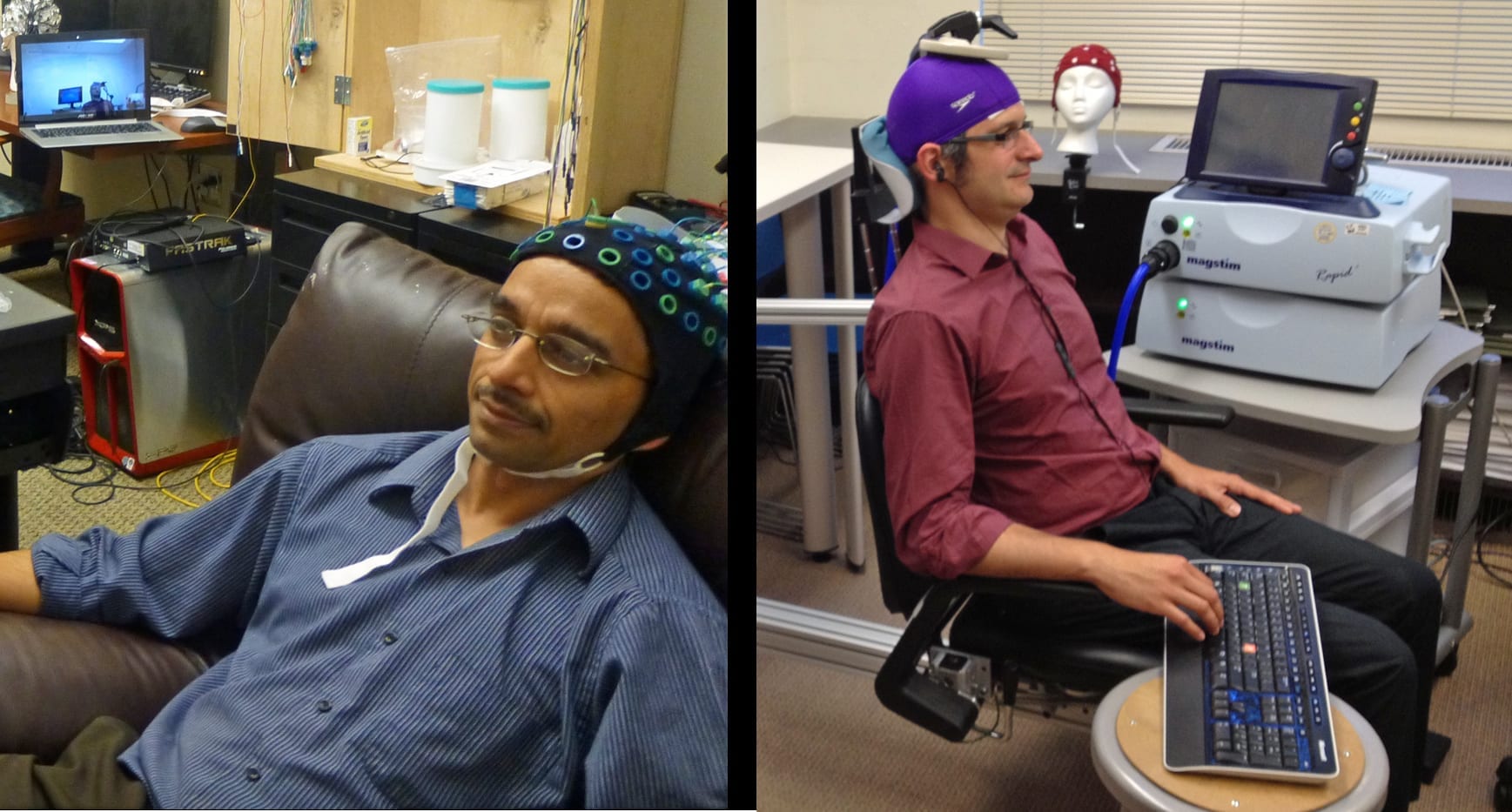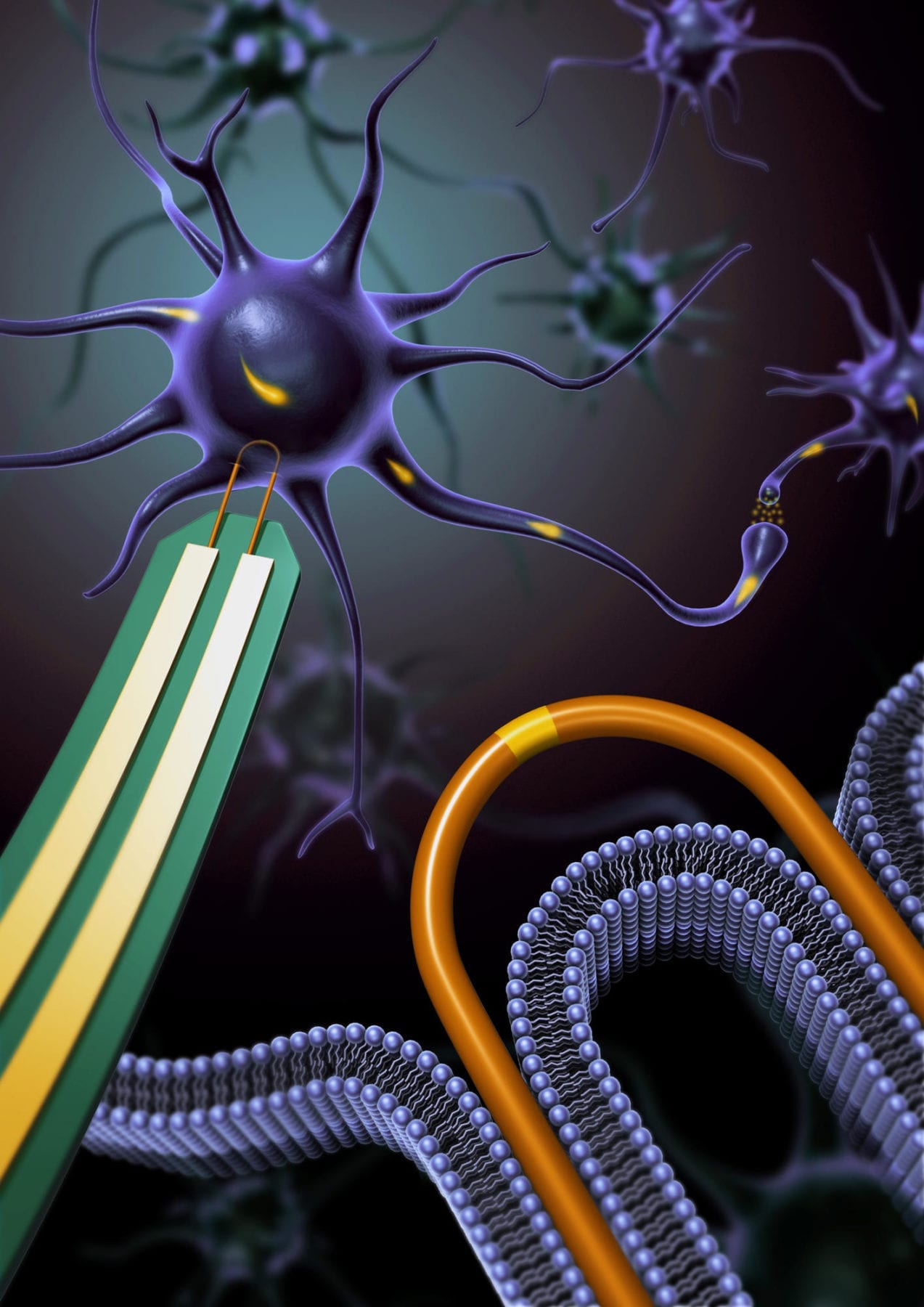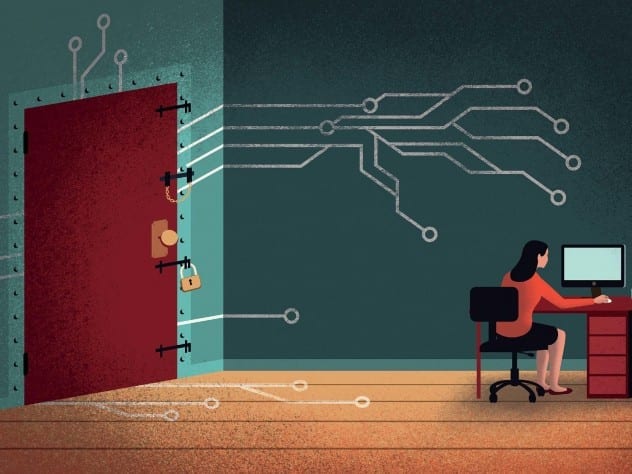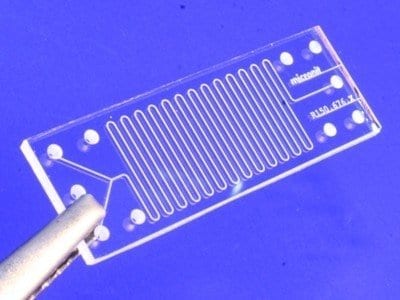
“The Internet was a way to connect computers, and now it can be a way to connect brains,”
University of Washington researchers have performed what they believe is the first noninvasive human-to-human brain interface, with one researcher able to send a brain signal via the Internet to control the hand motions of a fellow researcher.
Using electrical brain recordings and a form of magnetic stimulation, Rajesh Rao sent a brain signal to Andrea Stocco on the other side of the UW campus, causing Stocco’s finger to move on a keyboard.
While researchers at Duke University have demonstrated brain-to-brain communication between two rats, and Harvard researchers have demonstrated it between a human and a rat, Rao and Stocco believe this is the first demonstration of human-to-human brain interfacing.
“The Internet was a way to connect computers, and now it can be a way to connect brains,” Stocco said. “We want to take the knowledge of a brain and transmit it directly from brain to brain.”
The researchers captured the full demonstration on video recorded in both labs.
Rao, a UW professor of computer science and engineering, has been working on brain-computer interfacing in his lab for more than 10 years and just published a textbook on the subject. In 2011, spurred by the rapid advances in technology, he believed he could demonstrate the concept of human brain-to-brain interfacing. So he partnered with Stocco, a UW research assistant professor in psychology at the UW’s Institute for Learning & Brain Sciences.
On Aug. 12, Rao sat in his lab wearing a cap with electrodes hooked up to an electroencephalography machine, which reads electrical activity in the brain. Stocco was in his lab across campus wearing a purple swim cap marked with the stimulation site for the transcranial magnetic stimulation coil that was placed directly over his left motor cortex, which controls hand movement.
The team had a Skype connection set up so the two labs could coordinate, though neither Rao nor Stocco could see the Skype screens.
Rao looked at a computer screen and played a simple video game with his mind. When he was supposed to fire a cannon at a target, he imagined moving his right hand (being careful not to actually move his hand), causing a cursor to hit the “fire” button. Almost instantaneously, Stocco, who wore noise-canceling earbuds and wasn’t looking at a computer screen, involuntarily moved his right index finger to push the space bar on the keyboard in front of him, as if firing the cannon. Stocco compared the feeling of his hand moving involuntarily to that of a nervous tic.
“It was both exciting and eerie to watch an imagined action from my brain get translated into actual action by another brain,” Rao said. “This was basically a one-way flow of information from my brain to his. The next step is having a more equitable two-way conversation directly between the two brains.”
The Latest Bing News on:
Brain-to-brain interface
- The Rise Of Brain Implant Deviceson May 1, 2024 at 5:54 am
A cryptocurrency firm, Tether has made a substantial £160 million investment in Blackrock Neurotech, a U.S.-based brain implant company specialising in brain-to-computer interfaces. The deal was final ...
- China Has a Controversial Plan for Brain-Computer Interfaceson April 30, 2024 at 12:12 pm
China's brain-computer interface technology is catching up to the US. But it envisions a very different use case: cognitive enhancement.
- Dutch startup to test hearing via brain-computer interfaceon April 30, 2024 at 6:23 am
MindAffect has raised new funding for its hearing diagnostics solution that uses brain-computer interface technology.
- Tether Acquires Stake in Brain-Computer-Interface Firm Blackrock Neurotechon April 30, 2024 at 5:42 am
Tether, which claims to be one of the largest companies in the digital asset industry, announced that it has made a strategic investment.
- Crypto company Tether invests $200 million in brain-chip maker Blackrock Neurotechon April 29, 2024 at 8:41 am
Crypto company Tether has invested $200 million in Blackrock Neurotech, taking a majority stake in the U.S. brain implant company, Tether said in a statement on Monday. Blackrock Neurotech makes brain ...
- Crypto company Tether invests $200 mln in brain-chip maker Blackrock Neurotechon April 29, 2024 at 7:41 am
Crypto company Tether has invested $200 million in Blackrock Neurotech, taking a majority stake in the U.S. brain implant company, Tether said in a statement on Monday.
- Tether Buys $200M Majority Stake in Brain-Computer Interface Company Blackrock Neurotechon April 29, 2024 at 6:11 am
T ether, the issuer of stablecoin USDT, said Monday that it invested $200 million to acquire a majority stake in brain-computer interface company Blackrock Neurotech via its venture capital division ...
- China developed its very own Neuralink — Neucyber brain interface comes from a neurotechnology firmon April 27, 2024 at 4:35 am
A Chinese company backed by the state, Beijing Xinzhida Neurotechnology, introduces its Neucyber brain interface tested with a monkey and a mechanical arm.
- China Creates 'Neucyber,' Its Version of a Neuralink Brain Chipon April 25, 2024 at 5:58 am
China has reportedly developed a brain-computer interface chip called Neucyber that allows a monkey to control a robotic arm with only its thoughts.
- MIT Technology Reviewon April 19, 2024 at 3:00 am
In the world of brain-computer interfaces, it can seem as if one company sucks up all the oxygen in the room. Last month, Neuralink posted a video to X showing the first human subject to receive its ...
The Latest Google Headlines on:
Brain-to-brain interface
[google_news title=”” keyword=”brain-to-brain interface” num_posts=”10″ blurb_length=”0″ show_thumb=”left”]
The Latest Bing News on:
Human-to-human brain interface
- China Has a Controversial Plan for Brain-Computer Interfaceson April 30, 2024 at 12:12 pm
China's brain-computer interface technology is catching up to the US. But it envisions a very different use case: cognitive enhancement.
- What $200 Million In Crypto Cash Means For Blackrock Neurotechon April 30, 2024 at 11:08 am
Inside this week's $200 million funding deal of Blackrock Neurotech: Where will the money go, and what does it mean for the industry?
- Tether puts $200mn into Blackrock Neurotech as a strategic investmenton April 30, 2024 at 7:49 am
Tether announced a strategic investment of $200 million in Blackrock Neurotech, the globally leading pioneer in Brain-Computer-Interface (BCI) technology.
- Tether Acquires Stake in Brain-Computer-Interface Firm Blackrock Neurotechon April 30, 2024 at 5:42 am
Tether, which claims to be one of the largest companies in the digital asset industry, announced that it has made a strategic investment.
- Stablecoin firm Tether invests $200M in neurotech companyon April 29, 2024 at 6:00 am
Tether has invested $200 million in the neuroscience research firm Blackrock Neurotech, becoming the majority stakeholder.
- Brain-machine integration spawns global biz raceon April 28, 2024 at 4:52 pm
In invasive BCI, the sensors are implanted inside the brain in order to increase the information that is being extracted. In contrast, noninvasive BCI is relatively safer and easy to implement but has ...
- Colorado enacts groundbreaking brain data privacy lawon April 24, 2024 at 6:15 pm
Colorado became the first state in the nation to enact a law protecting neural data, emphasizing the growing intersection of technology and human biology while ensuring privacy in the expanding field ...
- Your Brain Waves Are Up for Sale. A New Law Wants to Change That.on April 17, 2024 at 12:37 pm
In a first, a Colorado law extends privacy rights to the neural data increasingly coveted by technology companies.
- Why Elon Musk's Neuralink brain implant reframes our ideas of self-identityon April 17, 2024 at 4:14 am
In March, a man called Noland Arbaugh demonstrated that he could play chess using only his mind. After living with paralysis for eight years, he had gained the ability to perform tasks previously ...
- Elon Musk's Brain Chip Could Restore Vision and Mobility, But Has a Long Way to Goon March 29, 2024 at 4:00 am
Neuralink's brain-computer interface might still be far off from its goal of uplifting human cognition into the future, but its current ambitions lie in clinical settings, namely for treating ...
The Latest Google Headlines on:
Human-to-human brain interface
[google_news title=”” keyword=”human-to-human brain interface” num_posts=”10″ blurb_length=”0″ show_thumb=”left”]










